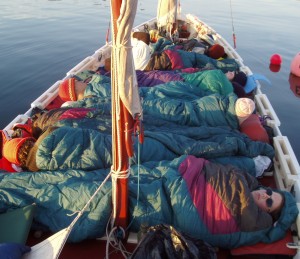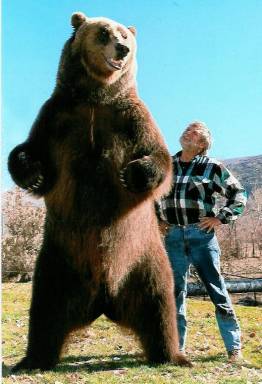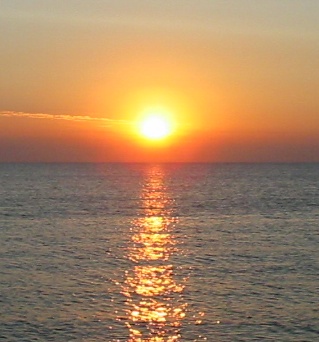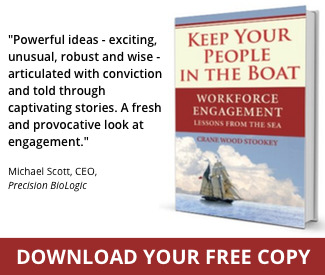Outward Turn is a practice we do at the Nova Scotia Sea School, on the sailing voyages of self-discovery we take with teenagers in traditional 30-foot-long open wooden boats. Crews of 2 staff and 11 teenagers — many of whom have never been in a boat before — sail these boats on voyages among the islands of the Nova Scotia South Shore, on trips lasting anywhere from five days to three weeks. We anchor at night in protected coves, but we cook, sleep and live in the boat, putting up a tarp stretched between the masts if it rains.
Thirteen people in a 30’ open boat for days at a time with no escape is an intensely claustrophobic experience. At the same time, we’re out along the magical Nova Scotia coast, with the vast natural world all around us.
Since claustrophobia or space depends on whether we choose to look in, at our overcrowded boat, or out at the big world, each morning— when all is ready but just before we raise the anchor and sail away for the day — we space ourselves out along the edge of the boat and look out, in silence, away from each other toward the sea, the shore and the sky. Maybe just for five minutes, maybe for half an hour. We don’t write in journals or read inspirational excerpts. We just sit quietly with the big world. We do this again at the end of the sailing day, once the anchor is down and before we dive into tarp setup and dinner prep.
In a situation like the boa
This may seem like a curious way to approach a deeper engagement, by having everyone disengage from each other and all the tasks that the boat has waiting for us. It’s a bit of a mystery, but it seems to be true: the most direct way to connect with the expansive and unencumbered state of mind is by simply stopping. Outward turn is a stopping practice, and stopping practice turns our attention away from our preoccupation with the smallness of our experience, and opens up the space that’s needed for us take a fresh start with whatever comes next.
Because we also have to sail the boat on the next leg of the voyage, sometimes in strong winds or navigating in thick fog. We have to row, sometimes all day if it’s calm. We have to get to a safe harbour, then set up the tarp between the masts, cook dinner, sometimes in the pouring rain. If there’s a lightning storm in the middle of the night we have to evacuate the boat and go ashore, huddling in the rain until it’s over. The next morning we get up, make breakfast, pack our gear and do it all over again. There isn’t much time for sitting around on a Sea School voyage.
But even if there’s bad weather coming and we have a long way to go and time is of the essence, we stop for outward turn. Why spend critical time on such seemingly unproductive activity?
Because our state of mind is of the essence too. Whatever we do depends first on how we show up for the task: spacious and open, or preoccupied and narrow? So we start with how we show up. We start with how we are, in the moment, on the spot. To be able to notice how we are in the moment, we can take a moment to stop and look
The goal of stopping practice is not to stop doing, but to bring to our doing a more expansive, unencumbered state of mind. Then whatever we do, we can bring our complete, unencumbered selves to the task.
Mental claustrophobia can take hold of us anywhere: work, with family, in traffic. And one thing is certain. We won’t find our best performance in that mental claustrophobia. But the good news is, the more expansive state of mind is actually our natural state. We cover it over with our speed and preoccupation, but it’s always there, and we can train ourselves to connect with it, on the spot, in the middle of a busy day, even under pressure, whenever we need it most.







 Of course, the most disarming and pacifying room in the world would not have worked if the general had walked in and said, “I’m not meeting here. I’m not one of your neighbors over for an afternoon chat.” Mandela knew whom he was dealing with. He knew that protecting family and home life were the main concerns of both whites and blacks, and he used this to advantage by meeting in his own home, where the chairs could be his allies.
Of course, the most disarming and pacifying room in the world would not have worked if the general had walked in and said, “I’m not meeting here. I’m not one of your neighbors over for an afternoon chat.” Mandela knew whom he was dealing with. He knew that protecting family and home life were the main concerns of both whites and blacks, and he used this to advantage by meeting in his own home, where the chairs could be his allies.


 Good morning everyone!
Good morning everyone! Our noble awesome shiny is with us always, of course. But when it’s hard to find, the world can be our mirror. Polishing our brass, cleaning our pot, touching the sharpness of real things, whatever we do to make the world bright and vivid makes life mirror-like. The mirror commands us, and the command is, “See this noble awesome shiny. Enjoy yourself. Enjoy yourSELF.”
Our noble awesome shiny is with us always, of course. But when it’s hard to find, the world can be our mirror. Polishing our brass, cleaning our pot, touching the sharpness of real things, whatever we do to make the world bright and vivid makes life mirror-like. The mirror commands us, and the command is, “See this noble awesome shiny. Enjoy yourself. Enjoy yourSELF.”
 Our noble awesome shiny is with us always, of course. But when it’s hard to find, the world can be our mirror. Polishing our brass, cleaning our pot, touching the sharpness of real things, whatever we do to make the world bright and vivid makes life mirror-like. The mirror commands us, and the command is, “See this noble awesome shiny. Enjoy yourself. Enjoy yourSELF.”
Our noble awesome shiny is with us always, of course. But when it’s hard to find, the world can be our mirror. Polishing our brass, cleaning our pot, touching the sharpness of real things, whatever we do to make the world bright and vivid makes life mirror-like. The mirror commands us, and the command is, “See this noble awesome shiny. Enjoy yourself. Enjoy yourSELF.”

